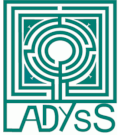Home > Programmes > Tibetan macaque
Tibetan macaque
The Tibetan macaque, Macaca thibetana, also known as the Chinese stump-tailed macaque or Milne-Edwards’ macaque has been described in 1870 by Alphonse Milne-Edwards of the National Natural History Museum (Paris). It is the largest macaque species, with males weighing up to almost 20 kg.
The species is listed near-threatened by IUCN but some populations thrive in areas such as Mount Emei, Sichuan, where groups of the western subspecies M. thibetana thibetana are common and fed by tourists and Buddhist clerics around temples.

- Tibetan macaques waiting for food at XiXiangChi temple (2040 m asl)
This situation of relatively close contact between humans and wild primates raises a number of questions about its implications for human and animal health and population management.

- Looking for food, including in plastic bags at XiXiangChi temple
November 2013: first recognition at Mount Emei, China terrestrial ecosystem research station and tourist area
Pr Li Li (李丽),Tim Slate, Eve Afonso and Patrick Giraudoux had a first assessment of the monkey feeding area near the China Terrestrial Ecosystem Research Station at WuXiangGang (五显岗) close to LongMenCun,龙门村 (103.33E 29.52N) on November 8. In addition to the natural food they find in the forest, the monkeys are fed with peanuts wrapped in plastic bags and fruit thrown away by tourists.

March 2024: recognition treck from the heights of HeiShuiCun(黑水村)to Linjue temple (灵谷寺)
A two-day trek (March 13-14) started from the heights of HeiShuiCun 黑水村 (1100 m asl), from temple to temple and rest stations up to LinJueSi (灵谷寺) (2390 m asl). The night was spent at XiXiangChi temple, 洗象池寺 (2040 m asl) where the first group of monkeys was observed. Throughout the trek, there are many signs warning trekkers about how to behave with monkeys, which can steal bags for food or be aggressive in order to get bags from them.
 Then we made a quick visit by cable car to the Golden Summit(金顶) at 3079 m asl, which is visited by up to 50,000 tourists and believers every day. Signs also warn tourists about feeding monkeys and their behaviour.
Then we made a quick visit by cable car to the Golden Summit(金顶) at 3079 m asl, which is visited by up to 50,000 tourists and believers every day. Signs also warn tourists about feeding monkeys and their behaviour.
This illustrates a contrasting and contradictory situation where the presence of familiar monkeys attracts tourists to the area, creating a wildlife tourism economy, and the risks that familiarity could bring in terms of contact between tourists and monkeys (bites, exchange of pathogens, etc.) and the impact of feeding on the monkey population (overweight, density, etc.).
This visit provided us an invaluable opportunity to assess the situation on the ground, to evaluate the accessibility of monkey home range (steep slopes prevent full accessibility), to clarify the research questions that can be addressed on this basis and to detail the corresponding roadmap.


Participants (alphabetic order): 巴教授 (Patrick Giraudoux), 郭剑英(Guo JianYing),郭玉红 (Guo YuHong), 李丽 (Li Li), 李前进 (Li QiangJing), 刘洪江(Liu HongJiang),孙永兴 (Sun YongXing), 王璐 (Wang Lu),guided by 张可俊 (Zhang KeJun) and 梁东 (Liang Dong).










